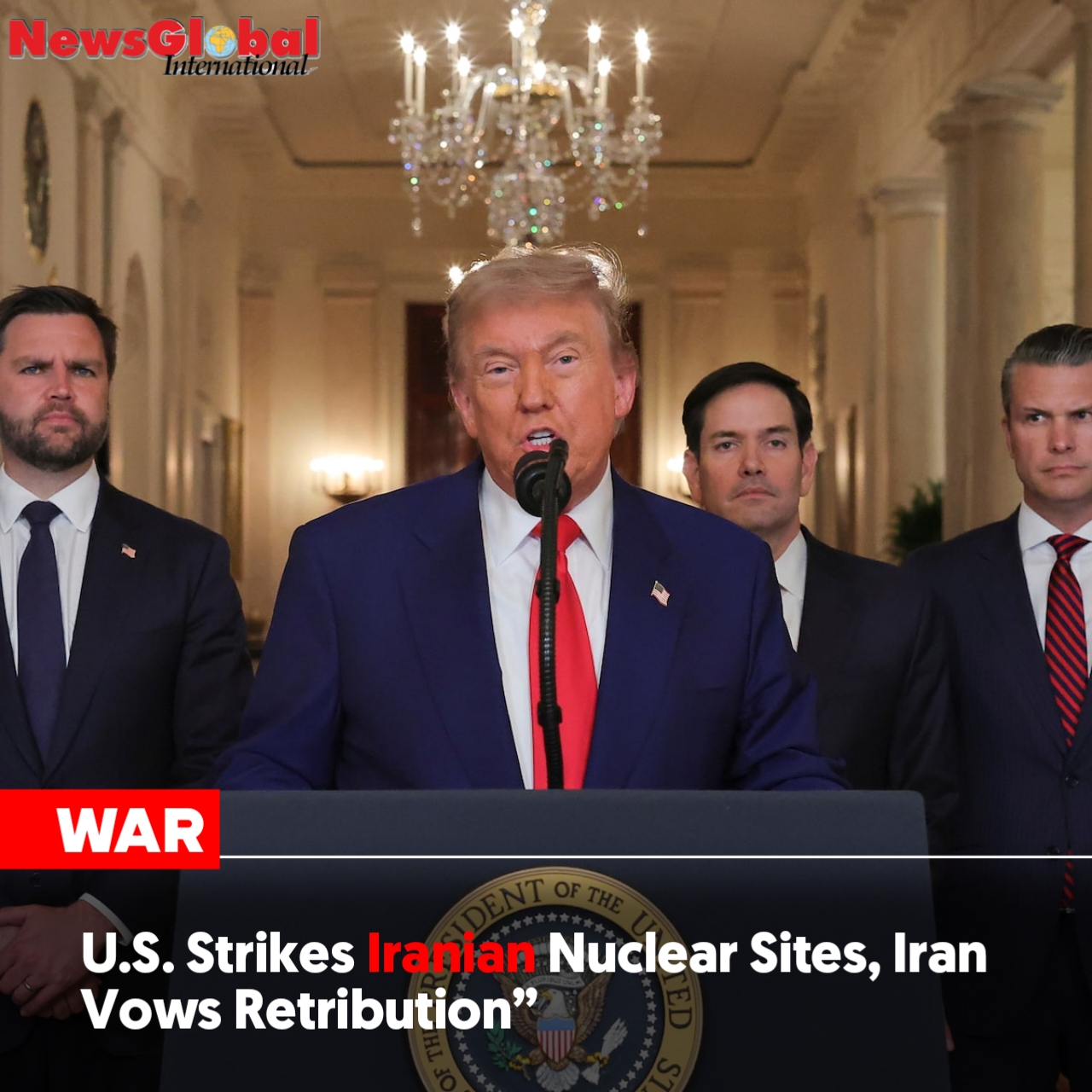The U.S. has carried out a significant surprise military operation against Iran’s nuclear infrastructure, launching airstrikes on three major facilities: Fordow, Natanz, and Isfahan. This marks a dramatic escalation in the ongoing Iran–Israel conflict, with Tehran swiftly responding that the attacks would bring “everlasting consequences.”
According to U.S. President Donald Trump, the strikes were executed using advanced weaponry, including B-2 stealth bombers deploying Massive Ordnance Penetrator (MOP) bunker-buster bombs, alongside Tomahawk cruise missiles launched from naval submarines. The target was to neutralize deeply buried uranium-enrichment facilities and disrupt Iran’s nuclear capabilities.
In a late-night national address, Trump heralded the strikes as a “very successful attack” that “completely obliterated” Iran’s nuclear infrastructure. He warned Iran that further acts of aggression would prompt even more devastating responses. While he expressed openness to peace, he emphasized that continued hostility would meet decisive military action.
Iranian state agencies confirmed damage to the targeted sites but reported no immediate radiation risk to surrounding areas. In a forceful statement, Foreign Minister Abbas Araghchi described the U.S. operation as an act of war, and warned that Iran “reserves all options” in responding. He added that the airstrikes would carry “everlasting consequences” and demanded that the international community take them seriously.
In retaliation, Iran launched a missile and drone counterstrike targeting northern and central Israel. While most of the incoming projectiles were intercepted by Israeli defense systems, a few penetrated, causing injuries and damage. Iran also threatened potential attacks on U.S. assets in the region, including naval vessels near Bahrain, and hinted at closing the Strait of Hormuz—the world’s crucial oil transit route.
The global reaction was swift and intense. The United Nations Secretary-General issued an urgent appeal for restraint, warning that the strikes risked triggering a wider regional conflict. Countries like China and Russia condemned the U.S. action, citing violation of international law. The European Union, while acknowledging Iran’s nuclear potential, stressed that military action threatens international peace and stability.
Within the United States, domestic debate ensued. Republican lawmakers, including Senator Lindsey Graham, praised the strikes as bold and necessary, while others criticized President Trump for initiating military action without prior congressional approval and warned of significant geopolitical risks. Economists pointed to rising oil prices and volatile global markets as immediate consequences of the conflict.
As tensions surge, U.S. military assets in the Middle East have been placed on heightened alert. The sudden U.S. entry into the conflict, in concert with Israel, seems to shift the focus—and danger—of the showdown. Tehran now faces a critical decision: retaliate against perceived aggression or pursue diplomatic disengagement.
The world remains on edge as Iran’s next move—be it military retaliation, economic retaliation, or diplomatic escalation—will likely define the region’s near-term future. For now, the delicate balance between deterrence and escalation remains suspended, with the risk of broader war looming larger than ever.

